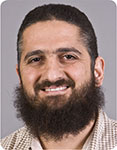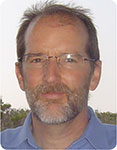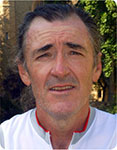Present-day in-situ stresses versus paleo-stresses for locating sweet spots in unconventional reservoirs
Hani Abul Khair A , Dennis Cooke A and Martin Hand BA Australian School of Petroleum, The University of Adelaide
B South Australian Centre for Geothermal Energy
The APPEA Journal 53(1) 217-226 https://doi.org/10.1071/AJ12019
Published: 2013
Abstract
The effect of stresses on permeability is a combination of external stress and pore pressure. The authors examine if and how present-day in-situ stresses and the spatial distribution of permeable locations in the Moomba-Big Lake fields in the Cooper Basin are correlated. Image logs, well logs, and formation tests are analysed and the orientation and magnitudes of the three principal stresses are calculated. A 3D model was constructed and the calculated stress magnitudes and orientations were applied to the model using the software Poly3D. The resulting stress distribution in the present-day stress state showed a potential sweet spot in the Big Lake field, which is presently the location of a gas pool that forms, with the Moomba field, one-third of the gas reserve in SA. No potential sweet spots, however, are located in the Moomba area.
The authors also used the finite element method (FEM) and the boundary element method (BEM) for modelling the behaviour of folds, fractures, and faults and for mimicking the tectonic history of the basin. Software codes Dynel3D and Traptester were used to examine the validity of geomechanical restoration techniques for locating sweet spots in the Moomba-Big Lake fields. The methodology attempts to reconstruct the present-day structural and geometrical placement and to predict fractures generated due to stresses released during past tectonic events. Predicted stresses succeeded in mapping the same sweet spot in the Big Lake field using both software codes. Accordingly, the present permeability and production rate is controlled by a combination of present-day and stored stresses.

Hani Abul Khair received his BSc in Earth and environmental sciences, his MSc in sedimentology, and his PhD in petroleum geosciences at the University of Jordan, Jordania. He worked as a petroleum geoscientist with Target Exploration UK before taking a postdoctoral position at the University of Jordan. In 2010, he joined the Australian School of Petroleum (ASP) as a research associate focused on a shale gas project funded by Primary Industries and Resources SA (PIRSA). In 2011, he started working with the South Australian Centre for Geothermal Energy Resources on a project involved in fracture detection in deep shale horizons. His expertise encompasses sedimentary geology, sequence stratigraphy, seismic interpretation, petrophysics, geomechanics, and basin analysis. Member: PESA (SA Committee Member) and AAPG. hani.abulkhair@adelaide.edu.au |

Dennis Cooke is the program manager for GeoFrac—the Australian School of Petroleum’s research program in unconventional resources. GeoFrac is bringing the ASP’s considerable experience in stress and geomechanics to problems involving fracture stimulation, stress, natural fractures, and brittleness. Dennis joined the ASP in December of 2010—specifically to start-up GeoFrac—following more than 20 years of experience in the oil and gas industry. His most recent experience is 11 years as chief geophysicist for Santos. His industry experience includes research, seismic processing, exploration, development, and technical service. He has done exploration and development geoscience in Australia, Alaska, Indonesia, Mid-Continent USA, Gulf of Mexico, and the North Sea. He has published in the areas of seismic inversion, reservoir characterisation, and seismic migration. dennis.cooke@adelaide.edu.au |

Martin Hand obtained a PhD (focused on the structural and metamorphic evolution of Proterozoic terrains in Antarctica and central Australia) from Melbourne University in 1995 after completing an honours degree at Newcastle University. He was then awarded an Australian Research Council Postdoctoral Fellowship at Adelaide University where he investigated the thermal evolution of the continental crust. In 2000, he was awarded an Australian Research Council Research Fellowship. After appointment as a lecturer in 2000 at Adelaide University, he and his colleagues formed the Continental Evolution Research Group (CERG). CERG has numerous national and international project foci; it is now a unit in the Centre for Tectonics Resources and Exploration, which he directed. He recently integrated his research interests with the emerging geothermal energy industry in SA. He is the director of the South Australian Centre for Geothermal Energy Research. martin.hand@adelaide.edu.au |


